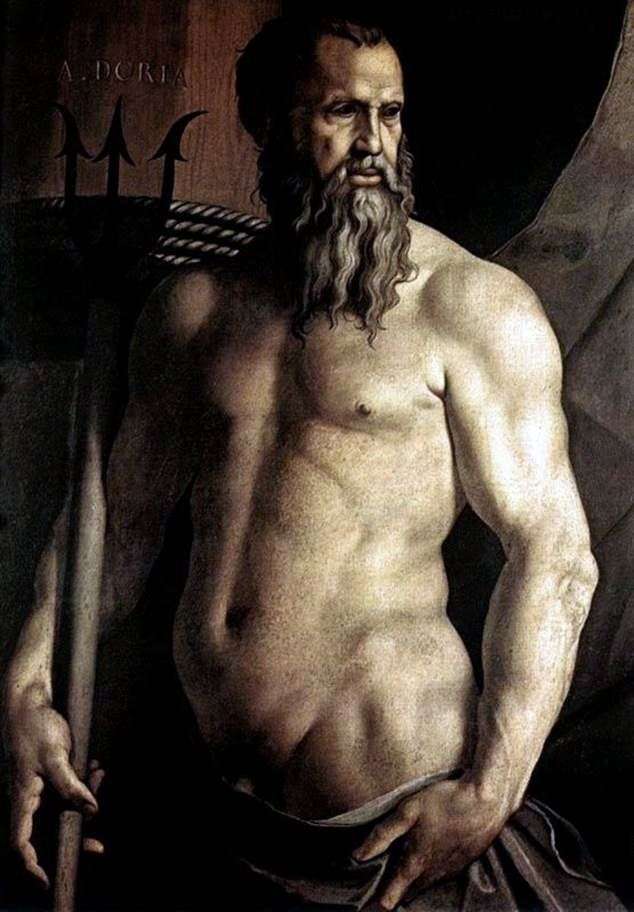
Painting by Angelo Bronzino “Portrait of Andrea Doria as Neptune”. The size of the painting is 115 x 53 cm, canvas, oil. Like an ancient sculpture of the terrible lord of the sea depths, Andrea Doria, a contemporary of the artist, appears before us. The muscular body is fashioned with classical simplicity, almost in the traditions of the Renaissance; proportionally, compositionally uncomplicated, the palette is sustained in gray-brown tones.
The mythological image is completed by a trident and a thick rope twisted into a ring to the right of the main figure, a little marine paraphernalia. The fact that this is a court portrait, reminds us of only the family inscription above the trident and the boring face of Andrea Doria. The Genoese admiral and statesman, was born in an ancient aristocratic family. He early orphaned, became a soldier, served first in the protection of Pope Innocent VIII, then at the kings of Naples Ferdinand I and Alfonso II and various Italian princes.
In 1522 he transferred to the service of the French king Francis I and served with him in 1522-25 and 1527-28. From him he received the rank of captain-general. After the expiry of his contract, he transferred to the service of Emperor Charles V. In the rank of admiral he commanded several expeditions against the Turks, captured the Koroni and Patras, in 1532, together with the emperor participated in the capture of Tunis in 1535. Charles V found in Doria’s face an invaluable assistant in his struggle against Francis I, through him he extended the influence of the empire to all of Italy.
In 1541, Doria participated in the unsuccessful military campaign of Charles V in Algiers. He saved from the final death the army and navy of the emperor, contrary to his advice, who undertook a campaign to Algeria. During the next five years, Doria continued to serve with the emperor, participated in several wars.
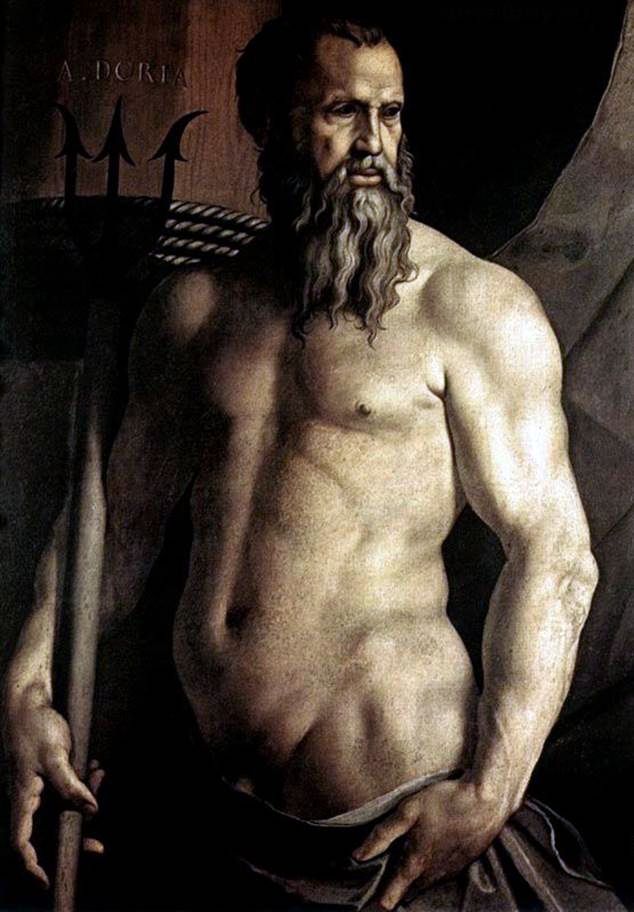 Portrait d’Andrea Doria sous la forme de Neptune – Agnolo Bronzino
Portrait d’Andrea Doria sous la forme de Neptune – Agnolo Bronzino Retrato de Andrea Doria en la forma de Neptuno – Agnolo Bronzino
Retrato de Andrea Doria en la forma de Neptuno – Agnolo Bronzino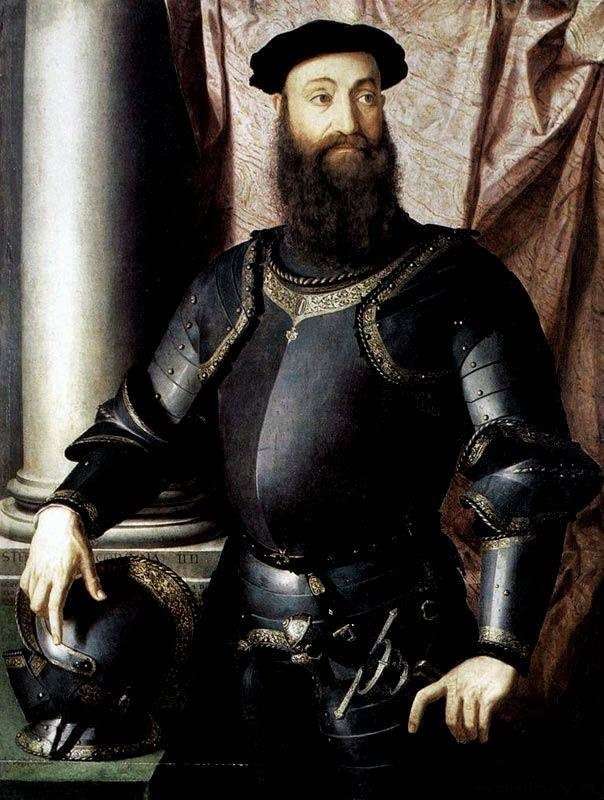 Portrait of Stefano Colonna by Agnolo Bronzino
Portrait of Stefano Colonna by Agnolo Bronzino Marquise Brigitte Spinola Doria – Peter Rubens
Marquise Brigitte Spinola Doria – Peter Rubens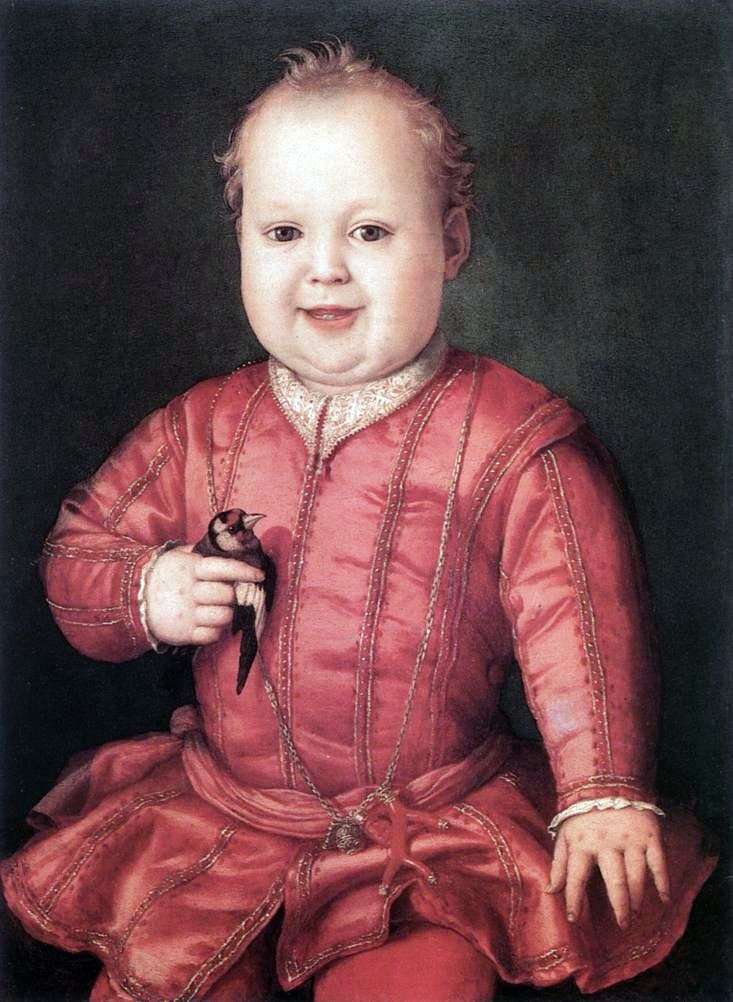 Portrait of Giovanni Medici by Agnolo Bronzino
Portrait of Giovanni Medici by Agnolo Bronzino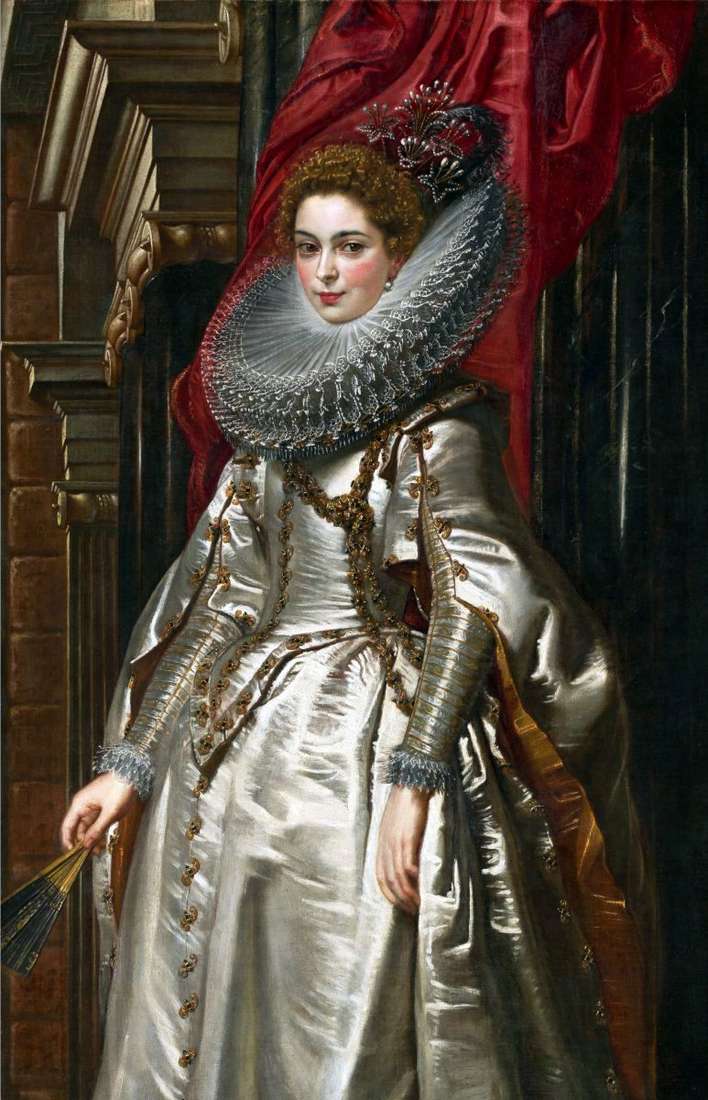 Marqués Brigitte Spinola Doria – Peter Rubens
Marqués Brigitte Spinola Doria – Peter Rubens Portrait of Laura Battifery by Agnolo Bronzino
Portrait of Laura Battifery by Agnolo Bronzino Portrait de Stefano Colonna – Agnolo Bronzino
Portrait de Stefano Colonna – Agnolo Bronzino